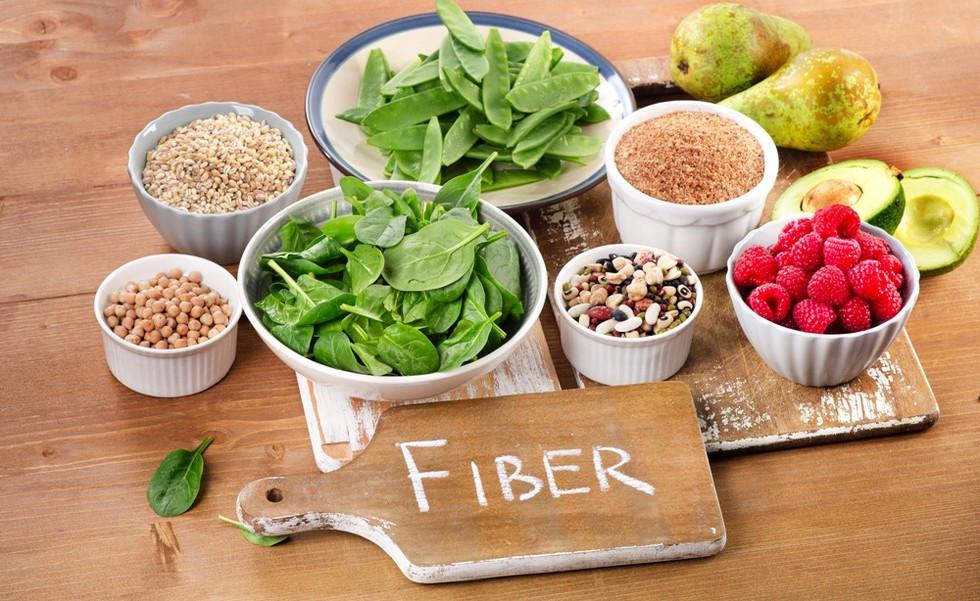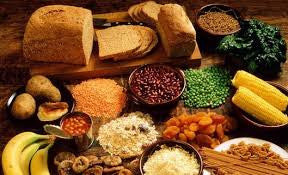
10 Health Benefits of Fiber

From parents to doctors to random health gurus you bump into during a walk in the park – it seems that everyone believes that placing fiber as a major component of your diet should be a top priority, without backing it up with evidence!
Well, not anymore!
We’re here to suggest and explain how and why adding more fiber to your diet will improve your health and give you a boost in your day-to-day performance levels. Plus, we'll also explain how fiber will help you tackle any challenges that life happens to be throwing your way!
What is Fiber?

Fiber comes from indigestible parts contained in veggies, fruits, legumes and whole grains (split peas, artichokes, peas, lima beans and more.)
There are mainly two kinds of fiber: soluble and insoluble. Soluble fiber breaks down in water and is known to help achieve normal cholesterol and blood glucose levels in the body. Foods rich in soluble fiber are apricots, oranges, mangoes, peanuts, kidney beans, black beans and more.
On the other hand, insoluble fiber does not dissolve in water – therefore it helps with preventing or relieving constipation and getting rid of irregular stool patterns. Some foods that contain high amounts of insoluble fiber are cauliflower, lentils, wheat bran, flax seeds and more.
Many foods carry both soluble and insoluble fiber. For the best results, opt to consume a high variety of fiber-rich foods.
Lowering Cholesterol Levels

Studies have shown that soluble fiber helps in lowering the “bad” cholesterol, or low-density lipoprotein levels.
Normalizing Digestion

Fiber makes it easier for stool to “pass over." It does so by increasing the size and volume by the dozen, thus relieving the time it takes for the stool to be pushed out. Fiber also soaks up water and solidifies the passable matter to transform watery stool into something you can “work with.”
Aiding in Colon Health

Going for a diet high in fibers can exponentially lower the risk of getting hemorrhoids or colon pouches (diverticular disease).
Battling Diabetes

A diet rich in insoluble fiber can significantly decrease the risk of succumbing to types 2 diabetes. Also, for those who are already affected with the disease, soluble fiber has shown to slow down the absorption of glucose into the bloodstream. This makes it easier for diabetics to control their blood sugar levels.
Stabilizing Blood Pressure Levels

The fiber found in flaxseed, oat bran, and black beans helps in lowering high blood pressure and also keeps inflammation at bay.
Helping the Heart

According to a study that appeared in the Journal of the American College of Cardiology Foundation, female subjects who consumed 26.3 grams of fiber on average were less likely to develop heart disease than those who ingested less fiber. The study followed exactly 39,876 women during the course of six years.
Assisting in Weight Maintenance

High-fiber edibles will satisfy your cravings faster and bring you up to a full belly quicker as opposed to foods low in fiber. Therefore, you’ll naturally maintain a healthy weight by opting for a diet abundant in both ends of the fiber spectrum (soluble and insoluble).
Preventing a Formation of Kidney Stones

We’ve already seen how fiber can help in maintaining normal blood sugar levels. This, in turn, lowers the chances of the body giving way to insulin spikes that can lead to developing kidney stones or gallstones.
Boosting the Immune System

According to top nutritionist Ann Louise Gittleman, Ph.D., CNS – fiber found in certain foods like flaxseeds can help flush down any toxins your body have accumulated and power up the immune system to effectively battle its way through the everyday hassle. This can particularly come to aid to post-menopausal women due to certain “lignans” in the “fibrous shell” that keep excess estrogen in check.
Trumping Stroke

A study has shown that total fiber intake was inversely proportional to the risk of developing a stroke. Additionally, increased fiber consumption lead to a significantly lower risk of developing the first stroke.
Conclusion?
In accordance with an HMD publication, adults aged 50 or younger should strive to ingest 38 grams of fiber for men, and 25 g. for women per day. Adults over the age of 50 should go for 30 g. for men and 21 grams of total fiber intake for women per day.
But before you start gobbling up legumes and munching on artichokes, remember that too much fiber entering the body at once could lead to bloating and unwanted gas. And you certainly don’t want to pass the wind while doing a powerpoint presentation in front of your biggest client now, would you?


